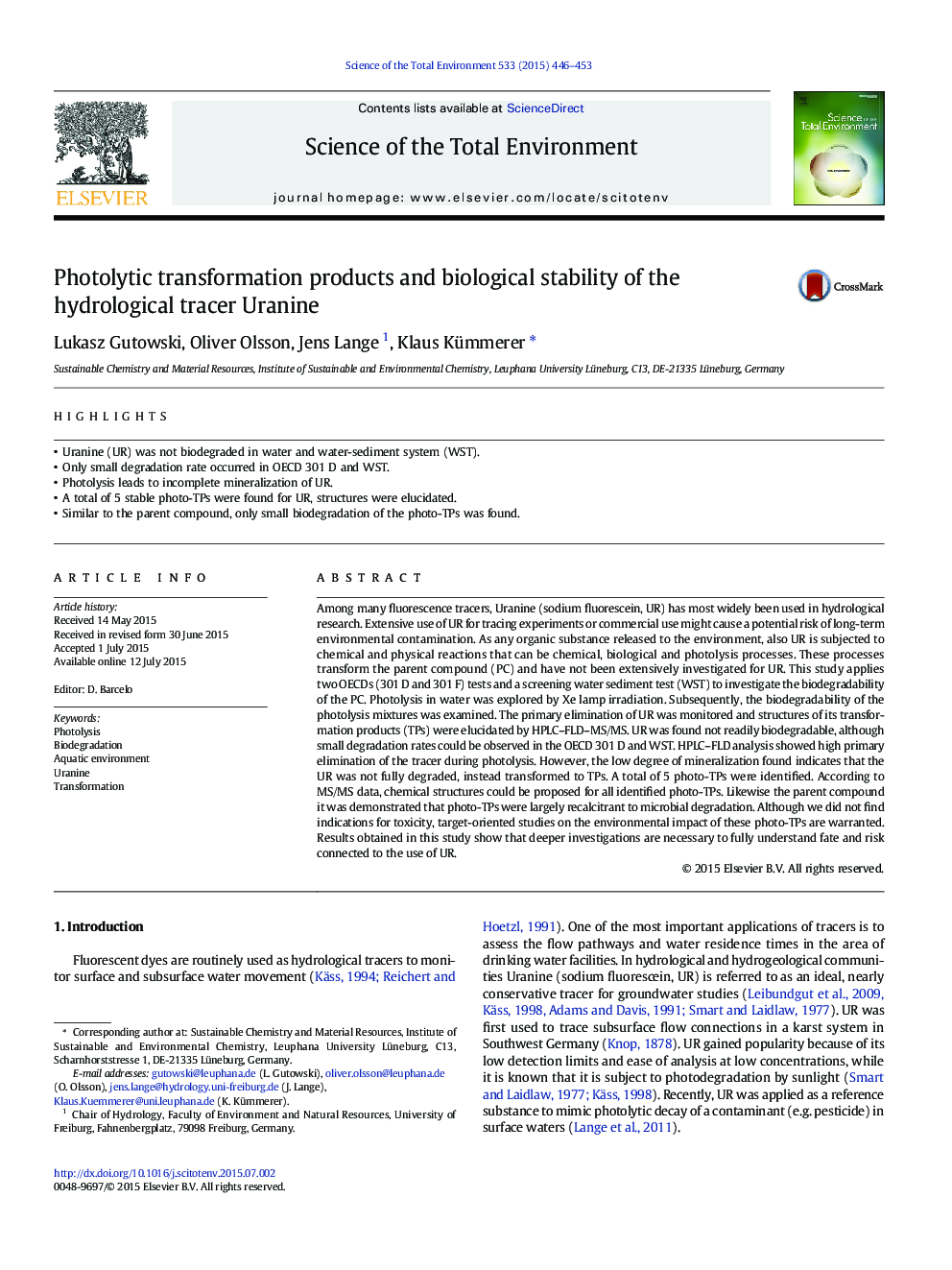| کد مقاله | کد نشریه | سال انتشار | مقاله انگلیسی | نسخه تمام متن |
|---|---|---|---|---|
| 6326296 | 1619751 | 2015 | 8 صفحه PDF | دانلود رایگان |
- Uranine (UR) was not biodegraded in water and water-sediment system (WST).
- Only small degradation rate occurred in OECD 301 D and WST.
- Photolysis leads to incomplete mineralization of UR.
- A total of 5 stable photo-TPs were found for UR, structures were elucidated.
- Similar to the parent compound, only small biodegradation of the photo-TPs was found.
Among many fluorescence tracers, Uranine (sodium fluorescein, UR) has most widely been used in hydrological research. Extensive use of UR for tracing experiments or commercial use might cause a potential risk of long-term environmental contamination. As any organic substance released to the environment, also UR is subjected to chemical and physical reactions that can be chemical, biological and photolysis processes. These processes transform the parent compound (PC) and have not been extensively investigated for UR. This study applies two OECDs (301 D and 301 F) tests and a screening water sediment test (WST) to investigate the biodegradability of the PC. Photolysis in water was explored by Xe lamp irradiation. Subsequently, the biodegradability of the photolysis mixtures was examined. The primary elimination of UR was monitored and structures of its transformation products (TPs) were elucidated by HPLC-FLD-MS/MS. UR was found not readily biodegradable, although small degradation rates could be observed in the OECD 301 D and WST. HPLC-FLD analysis showed high primary elimination of the tracer during photolysis. However, the low degree of mineralization found indicates that the UR was not fully degraded, instead transformed to TPs. A total of 5 photo-TPs were identified. According to MS/MS data, chemical structures could be proposed for all identified photo-TPs. Likewise the parent compound it was demonstrated that photo-TPs were largely recalcitrant to microbial degradation. Although we did not find indications for toxicity, target-oriented studies on the environmental impact of these photo-TPs are warranted. Results obtained in this study show that deeper investigations are necessary to fully understand fate and risk connected to the use of UR.
Journal: Science of The Total Environment - Volume 533, 15 November 2015, Pages 446-453
